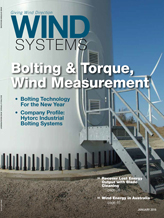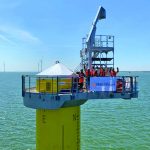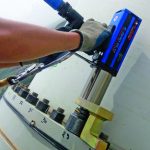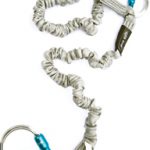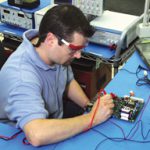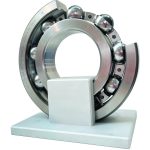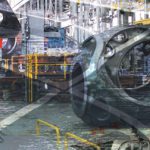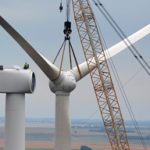Founded in New Jersey by John K. Junkers in 1968, Hytorc got its start by addressing the difficulties in industrial maintenance related to bolting. At that time, the majority of heavy industry bolting was done with a large wrench and hammer, and the definition of tight was when the nut stopped turning. While this was an inexpensive method that seemed to get the job done, in reality it was dangerous and time-consuming. In fact, in many cases, this method would lead to loosened nuts and joint failures, thus resulting in leaks and costly, unscheduled shutdowns. Yet, it became considered to be a part of normal plant operations since there weren’t many other options available.
 Hytorc recognized this need for a more efficient and safe way of doing things, so with its first system, it created a simple hydraulic ratchet that would turn the nut as it was powered from a hydraulic pump. This lead to the development of air-powered industrial torque wrenches and electric models, including a handheld battery-powered tool. Today, those principles remain the same, but the systems have evolved to become much more intuitive and safer. And in these endeavors, the company has made its mark on the wind energy industry.
Hytorc recognized this need for a more efficient and safe way of doing things, so with its first system, it created a simple hydraulic ratchet that would turn the nut as it was powered from a hydraulic pump. This lead to the development of air-powered industrial torque wrenches and electric models, including a handheld battery-powered tool. Today, those principles remain the same, but the systems have evolved to become much more intuitive and safer. And in these endeavors, the company has made its mark on the wind energy industry.
“Nearly every major innovation in industrial bolting over the last 45 years has come from Hytorc,” said Jason Junkers, Hytorc’s chief operating officer and one of the founder’s three sons who has been working full time at his family’s company for more than 12 years. “We are driven by feedback from our customers as well as continuous research and development. Intuitive design is a priority during new product development to ensure that the tools can be used safely, even when complete training has not been provided. There are many times where a tool may be purchased by one department that receives the complete training, and then it’s borrowed and used by another group that only gets a brief overview on how to properly use it. In these instances, it is critical that the tool is as safe and simple to operate as possible.”
Hytorc also has many resources dedicated to improving the quality and availability of training to ensure that all tool operators understand the safest way to do the job. These principles are especially important in the wind industry where tools are shipped all over the world as wind farms are constructed.
“It is our mission to eliminate safety incidents related to bolting, and we are continually developing training courses and product advancements to help us achieve that goal,” Junkers said.
Aside from the incredible accuracy and performance guarantee, Hytorc’s tensioning systems have also been proven to reduce job time by at least half over any other bolting system.
Additionally, according to Junkers, as the wind energy industry developed, Hytorc quickly realized that the large scale of modern wind turbines would require strict assembly and maintenance processes to assure safe, continuous operation.
“The manufacturing and assembly of today’s wind turbines includes up to 1,500 bolts and nuts per turbine, and many of these need to be checked on a regular basis to ensure that the vibration and movement of the turbine has not resulted in any loosening,” Junkers said. “Over the years, we have developed custom fixtures and job kits for nearly every application on wind turbines from all major manufacturers. We are continually developing systems that make the jobs safer, faster, and more accurate while staying intuitive and operator-friendly.”
In that effort, Hytorc began recruiting wind turbine technicians who could work hand-in-hand with its representatives and customers to find the best solution for each bolting job. The company has representatives across the globe with service centers spread throughout to provide a quick turnaround for its customers on all repairs, tool calibrations, and training courses. Additionally, Hytorc’s employees and representatives have a tremendous collective knowledge of industrial bolting information.
“We aim to be the greatest resource in the industry so that all of our customers know that with just one phone call, they can get an answer to any bolting-related question,” Junkers said. “From the beginning, our customers have been our priority, and we always strive to exceed their expectations.”
This level of customer service and dependability has helped Hytorc earn the unofficial title as “the most trusted name in the industry.”
“We’ve gained a reputation of being a partner for our customers’ success rather than just a tool sales company,” Junkers said. “Our dedication to our product quality, no-questions warranty, and worldwide coverage are some of the things that help us maintain our high standard of excellence.”
From the manufacturing floor of the largest wind turbine manufacturer to the most remote wind farm, Hytorc has provided bolting solutions that increase productivity through improvements in safety, quality, and schedule. On the manufacturing side of wind farm operations, Hytorc’s engineers bring an unmatched collective experience to problem solving and custom solutions for their customers, according to Junkers. One recent example of this is when the company’s team of engineers was approached with a bolting job that previously took up to eight hours to complete, creating a bottleneck in the production line. Junkers’ team at Hytorc was able to complete that same job in less than one hour using a custom-designed Hytorc system.
Junkers initially got involved in the wind energy industry when he took on the task of developing a fleet of 24/7 mobile service vehicles to address the need for such repair services in the wind energy industry.
“Our tools are heavily used in the wind industry, and there was a need for on-site calibration and repair so that down-time could be reduced,” Junkers said. “This project showed me the opportunity for new innovations that could improve our service to the wind industry, and we have been dedicated ever since.”
Over time, this proved to be a valuable resource for all of Hytorc’s customers across several industries, but the wind industry remains the one where the service is most valued. Tools are heavily used during turbine maintenance, resulting in more stringent calibration requirements, according to Junkers. The service vehicles can arrive on site and do the calibration to get the tool back in service within an hour. This also proves to be beneficial in reducing the loss that can occur when tools are shipped to a service center for service and then returned to a site after a crew has left.
In addition to its mobile repair services, nearly all of Hytorc’s wide range of products have been used to address bolting challenges in the wind industry. Its hydraulic, air, and electric tools can be coupled with custom-designed fixtures to simplify otherwise challenging bolting jobs.
“Over the years, we have developed custom fixtures for nearly every bolting job imaginable, including the yaw drive, yaw brake, yaw bearing, blade bolts, pitch drive, foundation bolts, tower bolts, and more,” Junkers said. “One of our latest tools, the Lithium Series battery gun, is an excellent choice for wind turbine maintenance.”
 Unlike the company’s hydraulic-powered tools, the battery gun does not require a heavy pump to be pulled up the tower. In fact, the tool is not much bigger than a standard power drill, albeit with a much larger battery and a bit more weight. This makes it easy for a wind turbine technician to clip it onto his belt as he makes the climb to the nacelle. Additionally, Hytorc offers technician training sessions and OSHA-approved safety courses. All of its tools are manufactured domestically in the U.S., and the company offers a one-year, no-questions-asked warranty to cover repair or replacement, regardless of cause.
Unlike the company’s hydraulic-powered tools, the battery gun does not require a heavy pump to be pulled up the tower. In fact, the tool is not much bigger than a standard power drill, albeit with a much larger battery and a bit more weight. This makes it easy for a wind turbine technician to clip it onto his belt as he makes the climb to the nacelle. Additionally, Hytorc offers technician training sessions and OSHA-approved safety courses. All of its tools are manufactured domestically in the U.S., and the company offers a one-year, no-questions-asked warranty to cover repair or replacement, regardless of cause.
According to Junkers, his family’s company has worked on nearly every turbine and wind farm in the world in one way or another. From central Iowa to remote regions in Asia, Hytorc has worked on both the manufacturing and maintenance sides. Its projects have involved turbines manufactured by GE, Siemens, and Vestas, among many others, and its client base in the wind energy industry is evenly spread between owners, operators, manufacturers, and service contractors.
Going into 2016 and future years, Hytorc has several new bolting systems currently in development that Junkers said he can’t wait to share with his company’s customers. Many of these developments have been a direct result of customer feedback, something Hytorc takes seriously.
Additionally, Hytorc’s training programs have improved in recent years and have become more widely available.
“Welders require certification to weld a connection right next to a bolted joint, but there is no standard for certification required for the bolting tool operator,” Junkers said. “We have worked together with OSHA and the American Society of Mechanical Engineers to develop programs that will help standardize bolting training to ensure that safety and efficiency are improved across the board.”
As for Junkers’ outlook on the wind energy industry, he said he believes good things will come out of 2016, and Hytorc is looking to further develop and improve on the training courses it offers.
“We are aware of many new projects and new manufacturing opportunities around the world, and we are excited to share our expertise in the industry and our custom solutions to help owners, operators, and manufacturers improve their productivity,” Junkers said. “There is always room for improvement when it comes to training, and we are continually developing our training programs to ensure that all tool operators receive the best training possible.”
For more information
on Hytorc go to www.hytorc.com.



















